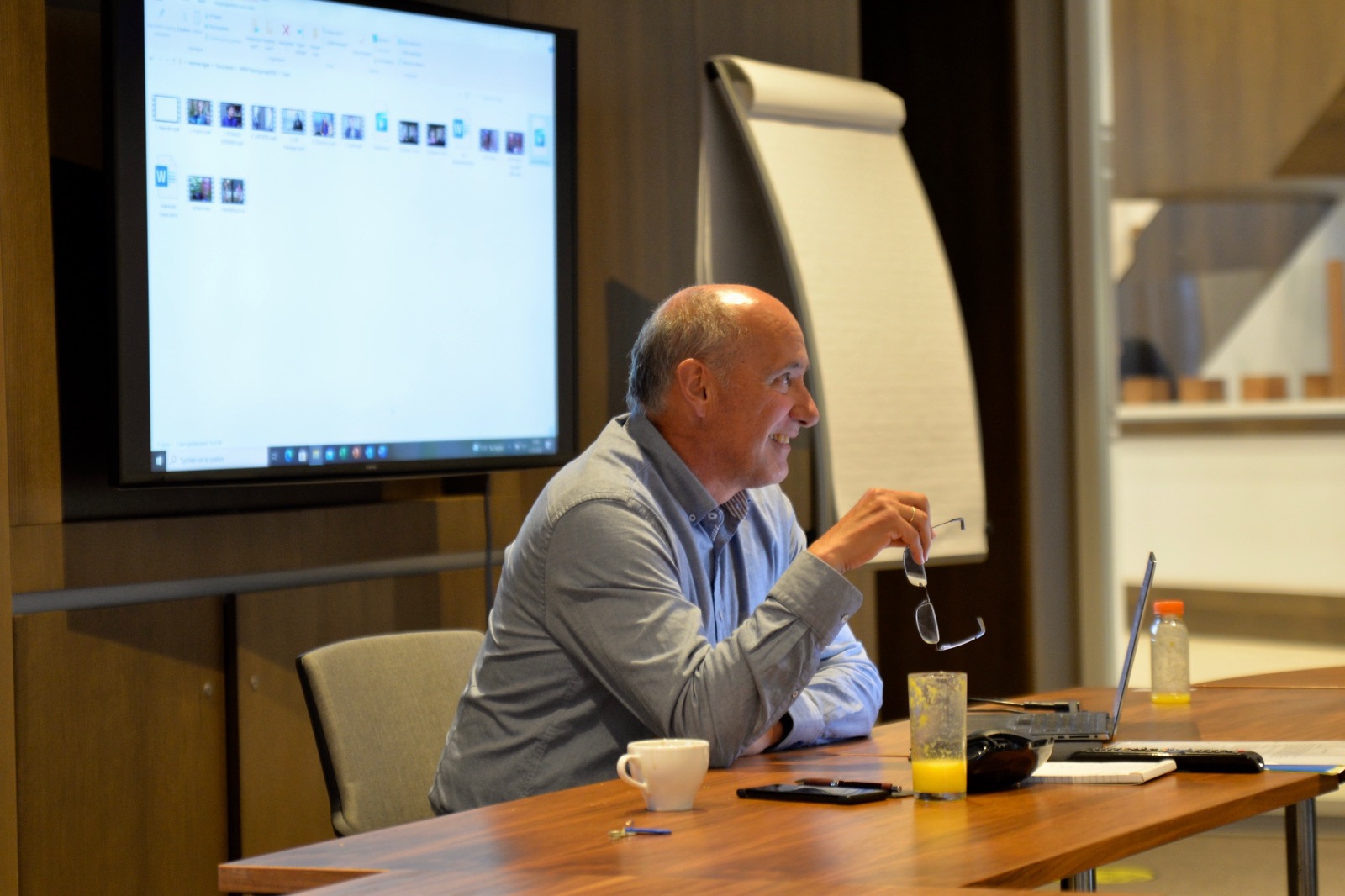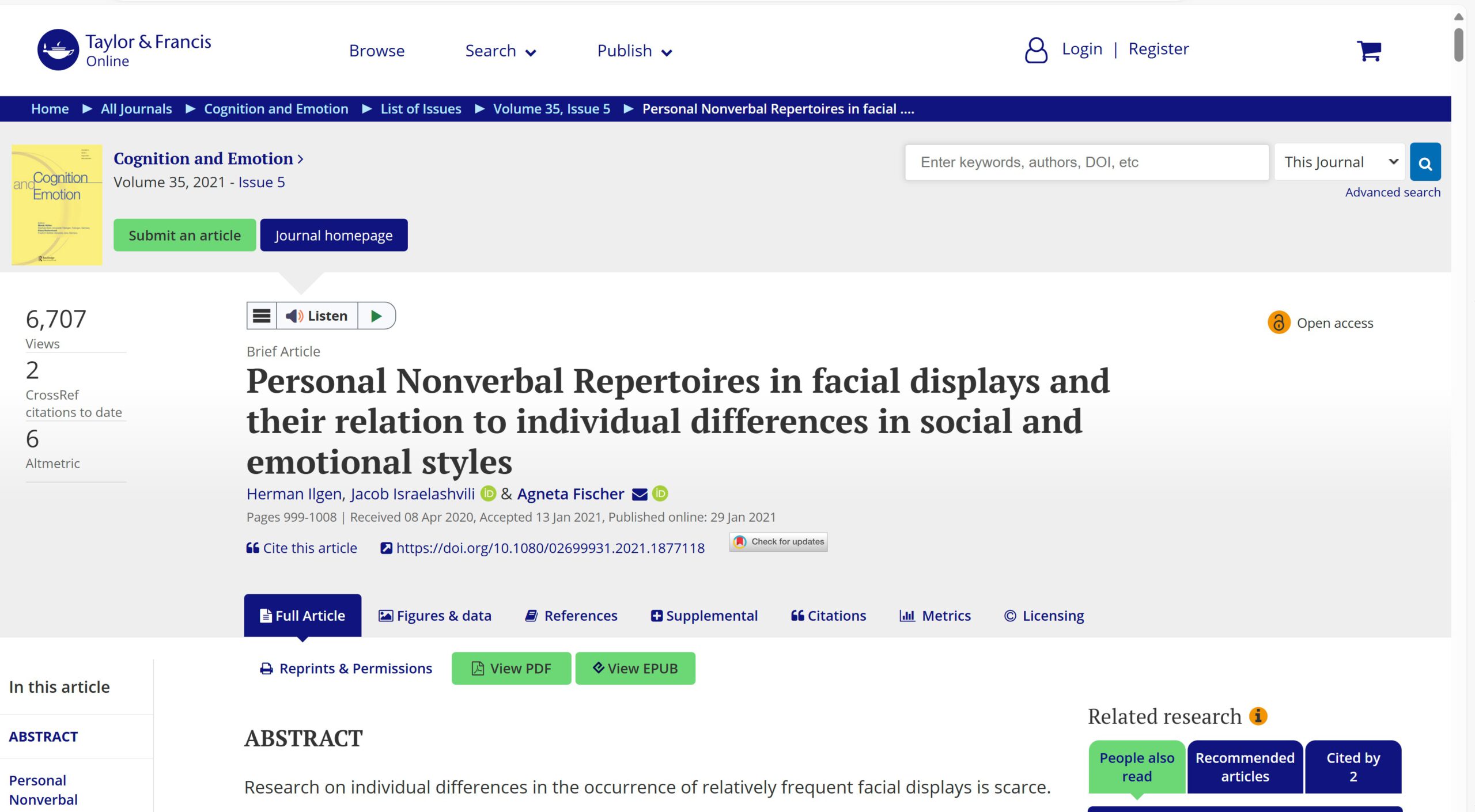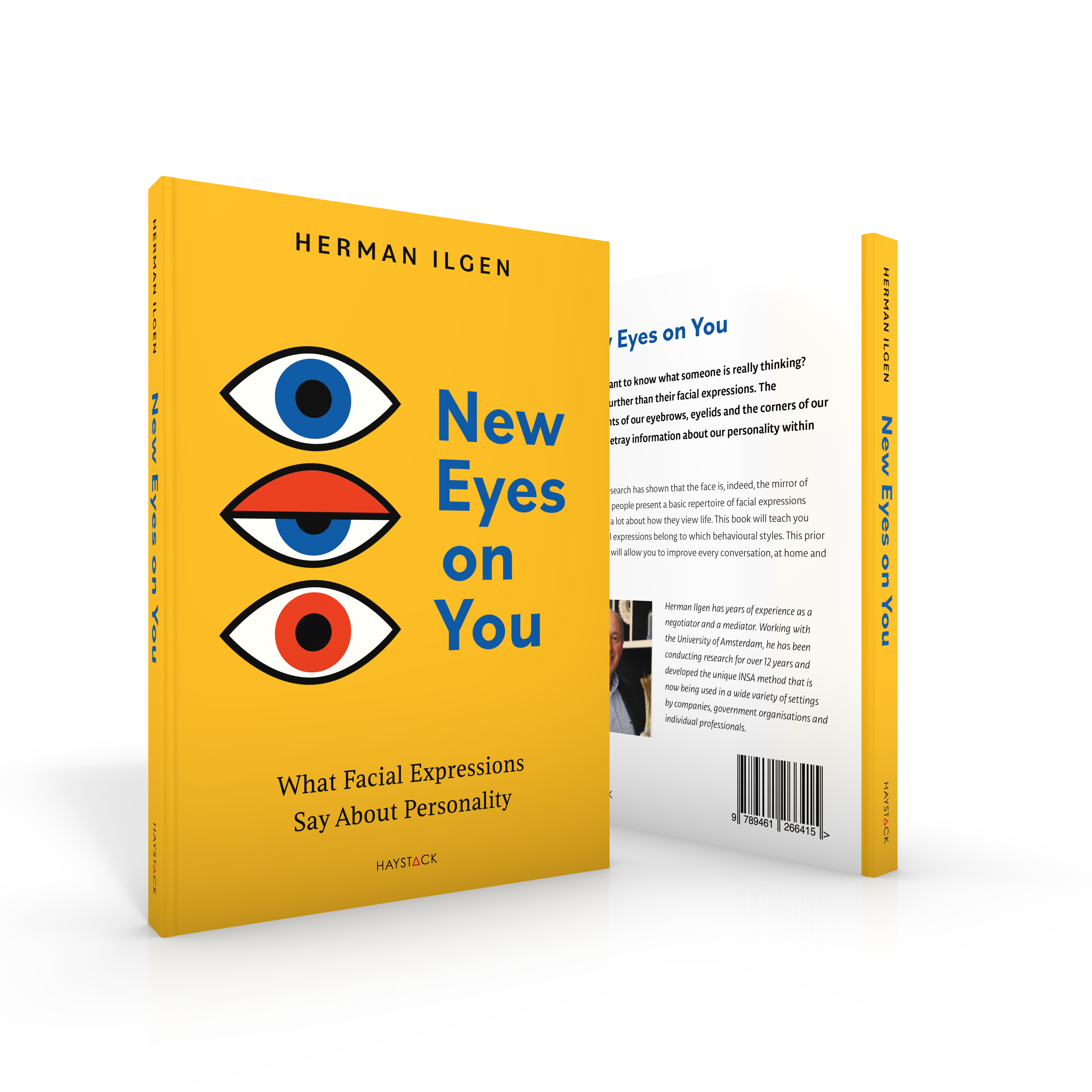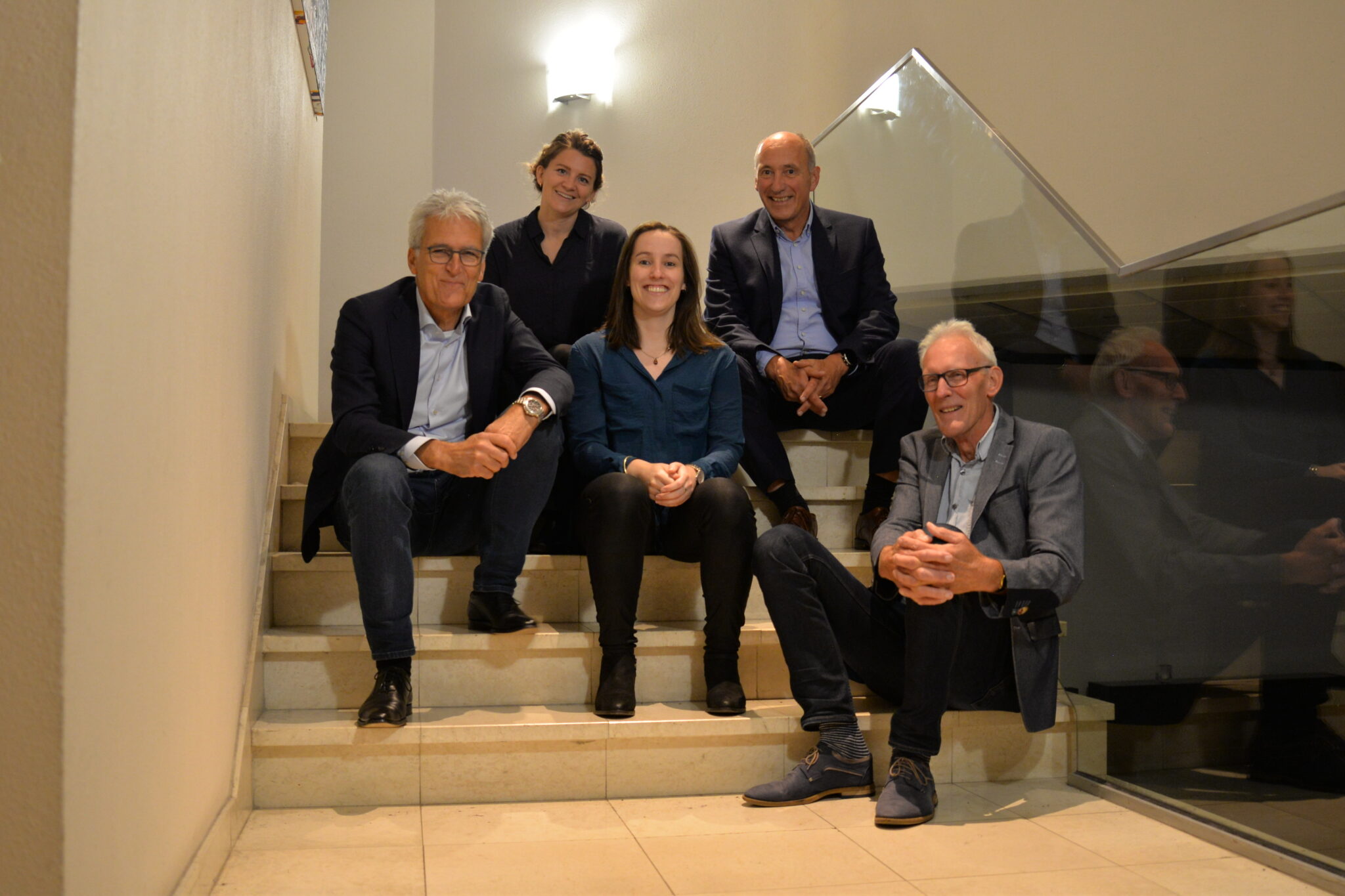OUR MISSION
CONTRIBUTING TO BETTER UNDERSTANDING BETWEEN PEOPLE WITH NEW INSIGHTS INTO NON-VERBAL COMMUNICATION, ON THE PATH TO A BETTER SOCIETY.
INNOVATIVE AND PRACTICAL TOOLS BASED ON CURRENT SCIENTIFIC RESEARCH
Research shows that the many, fast and subtle facial expressions are virtually unconscious. Unconscious also means they cannot be influenced. To us, this is why these facial expressions are so interesting: they are a reliable source of information.
FOUNDATIONS OF THE INSA METHOD
The INSA-Method has been developed by Herman Ilgen based upon collaboration in research with the University of Amsterdam. The professional negotiation and mediation practice and current scientific literature were his inspiration. He wanted to understand the impact of facial expressions in interaction, aiming at a better understanding for and between people. INSA focuses on repetitive facial expressions in every individual’s face. We follow the insights of scientists like Frijda, Fischer, Fridlund and Russell: the face primarily has a functionality in interaction. With the facial expressions we communicate what we tend to do in the current interaction. For the most part this happens unconsciously. The other person registers and interprets this tendency in a general way, also unconsciously.


INSA RESEARCH
To create a solid base for our ideas INSA permanently conducts research in cooperation with the University of Amsterdam into these repetitive facial expressions. This research is innovative and unique up to this very day. Over the last 60 years, the international research on facial micro-movements almost exclusively concerned what is visible in incidental or momentary situations. INSA is the first to research facial expressions from the perspective of what is visible continually. INSA was able to show that every individual has a specific set of repetitive facial expressions, regardless of the situation.
The first publication has appeared in January 2021: https://doi.org/10.1080/02699931.2021.1877118
We call this the Personal Nonverbal Repertoire (PNR). The research also shows linkage between PNR and personality (behavioral tendencies).
NONVERBAL IMPACT AND BEHAVIORAL TENDENCY
James Russell found in his research that people interpret each other’s faces along two dimensions: the level of arousal (high versus low) and the level of contact (cold versus warm). Nico Frijda discovered that with the mix of micromovements in our face we communicate what we tend to do in the interaction, that we show our behavioral tendency.
INSA research shows that the ideas of these two scientists are not only valid for incidental or momentary situations, but also for what people show more structurally in their face (the PNR).
Consistent facial displays show consistent behavioral tendencies of a person.
The Model we use to chart those consistent behavioral tendencies is closely related to the model Russell uses. We use a terminology that especially refers to behavioral tendencies: Acting versus Adapting, Analyzing versus Affiliating.

WHAT INSA CAN DO FOR YOU

Would you like to understand your nonverbal impact on others? The INSA method of Nonverbal Strategy Analysis is validated in practice. The method has unique safeguards for quality and integrity because it is based on scientific research. The measurements are also empirical and verifiable.
Within minutes highly repetitive facial micromovements show the messages people are transmitting about their personality, their behavioral preferences and sensitivity to others.
INSA professionals are specialized in providing training, team consultancy, process management and personal and executive coaching.
EDUCATION
INSA is the sole provider of the education to Master Nonverbal Strategy Analysis. The training consists of two multiple day trainings:
‘Understanding Nonverbal Dynamics’ focused on acquiring the analytical skills to understand people and to know what you need to do to build and maintain contact;
‘Self-Insight and Personal Influence’ focused on enhancing your self-insight, your nonverbal impact on others and work on your influencing style in contact with others.
Furthermore you will participate in a number of online exercise afternoons to enhance your analytic skills and to prepare for the analysis examination. The two trainings can also be followed separate from the total education program. Finally you are required to write a paper to show your knowledge of the theory focused on a subject of your choice.
All trainings are available in company.
TEAM NAVIGATOR®
Are you looking for rapid and in-depth insight into the potential of a team, so that you can adjust your actions effectively and efficiently? The Team Navigator® is a practice-proven and advanced instrument, based on scientific insights into the workings of interpersonal interaction. The Team Navigator® identifies and shows how interaction works at the unconscious level. It also enables more tailor-made control of the team process.
- Project teams in which effective cooperation is essential to achieving the result
- Teams dealing with a high risk task (complexity, time pressure, large degree of importance) or potential teamwork problems.
- Management teams and other “permanent” teams who wish to improve their level of cooperation and results.
With the Team Navigator®, it becomes clear just which (implicit) opportunities and risks are involved for the team, both internally and externally, always related to the actual context and requirements for the team. For the individuals in the team, this provides insight into interactive situations outside of the team as well. The analysis is based on the non-verbal communication of the team members; there is no need for filling in questionnaires, it is impossible to manipulate the information.

THE BOOK
Upon reading this book you will start looking at others differently, even at people you already know. You will gain insight in what motivates people and in hoi w you can effectively act upon that insight. The content of the book has a solid scientific base and has been tested in professional and daily practice for many years. It will enable you as a professional to work together with others and achieve results in a good atmosphere. And to prevent or repair avoidable miscommunications. In general it will enable you to create and maintain good and fruitful relationships.
With some people you should get to the point instantly, with others that is the last thing you should do, because they need some space and time to feel at ease. With others again creating clear expectations and structure of the interaction is essential. If you wish to attain results in a conversation you had better understand which style will work well with your interaction partner. With the INSA-Method explained in this book you can literally see the important information within mere minutes in someone’s facial expressions.
As a bonus you will notice that you will feel more at ease from understanding the process and the other person’s behavior. And it is not only about looking at others differently: you will also understand more about the way you come across with others.
This is always valuable, whether you work in HR, sales, law enforcement, as a manager or journalist. Or even in your private life trying to create and maintain relationships.
ISBN 9789461266415
ABOUT US
The INSA Foundation aims to contribute to a better functioning society by improving communications and thus more mutual understanding between people. Through training communication skills using the INSA Method we help to translate this understanding into effectiveness and efficiency in your interactions with others.
We are the first in the world – in cooperation with the University of Amsterdam – to perform independent research into highly frequent facial micromovements of individuals and the relationship with personality and interaction behavior.
INSA has developed a method and instruments to apply these insights from research to the everyday practice of interaction between people.
Observing in a purely factually fashion and postponing any judgments is essential to recognize and understand relevant information from facial displays.
With our method we can help you gain insight in your own nonverbal impact on others. We can train and advise you in improving your communications and preventing misunderstandings.
We can also support you in resolving communication and cooperation issues within teams in a thorough and lasting way.
Please contact us for more information
Address:
Weena 290,
3012 NJ Rotterdam
The Netherlands
Telephone: +31 651747561
Email: info@insa-foundation.org

CEO Silvana Ilgen

The INSA Board, from left to right: Erik Groot, Sara Makkenze, Laura Ilgen, Herman Ilgen, Onno Knaack
